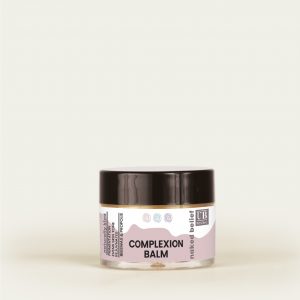“I’ve got Dark Skin, I don’t Need Sun Screen” and Other Dark Skinned Myths!
The colour of your skin is determined by the amount of melanin that is present in your skin, with fair people having the least and dark-skinned people obviously having the most. While this does amount to more sun-resistant skin, it doesn’t exempt you from sun-related problems such as Hyperpigmentation and skin cancer.
Your natural skin colour is determined by the amount and distribution of pigment-producing cells (melanocytes) in the skin. In layman’s terms, this amounts to a built-in sunscreen, but you can’t leave your poor skin on its own as the only protection, no matter how dark your natural, untanned skin colour is.
** This also doesn’t mean that when you get a nice tan that you have better protection!
Your skin will produce more melanin as a protective mechanism against the damage caused by prolonged exposure to harmful UV rays, but this doesn’t increase UV protection. It is a sign of excessive sun damage and will not help you in the long run.
1. UV rays damage any skin colour
UVA and UVB rays do not care whether you are as fair as the moon, or as sun-resistant as a piece of old leather, it WILL cause long term damage to your skin. Although people with darker shades of skin do have a smaller chance of getting sun damage, it WILL happen over time. The lighter spectrum will see the effects in the shortest amount of time, while the darker skins can outlast them, but even if you can’t see the redness you will still be able to feel the heat, tightness and pain.
2. The sun will age you faster
You might enjoy lying in the sun all day long like a rock lizard, but it will catch up with you! UV damage causes photodamage in all the skin colour variants, so don’t be too proud of not going red and peeling when you had a bad burn. For lighter skin tones the damage will show up earlier as fine lines and wrinkles, but darker skin tones will also suffer from sagging of the skin, loss of volume from the face and hyperpigmentation.
3. Hyperpigmentation
There are various different reasons for Hyperpigmentation – underlying illnesses, medication, pregnancy and exposure to the sun. The last one is what we will be discussing in this article, please seek medical attention if you suspect you have one of the other types of pigmentation.
Sun damage related pigmentation is called lentigines and are identified as flat, dark spots usually on the face and back of the hands. They appear in middle age and increase slowly with age. The obvious prevention method for this is sunscreen! Prevention is always better than cure, but if you are already there you can always look at a proper Pigmentation Cream.
4. Existing scars are a cancer danger zone.
Always take extra care of any scar tissue that gets exposed to the sun, especially scars resulting from thermal or chemical burns. People with darker skins are more likely to develop non-melanoma skin cancer in an area that is scarred or inflamed, which can be life-threatening if left unchecked. If you notice any changes to a scar, no matter how small, please go see your dermatologist immediately.
5. Dark skin does NOT keep cancer at bay!
People with darker skin types generally believe that they are more naturally “shielded” from cancer since their skin is more sun-resistant and therefore stronger. This couldn’t be further from the truth! What actually happens is that they realise too late that they do have cancerous growth or melanoma.
While the incidence of melanoma is higher in the Caucasian population, a July 2016 study in the Journal of the American Academy of Dermatology showed it is more deadly in people of colour. African American patients were most likely to be diagnosed with melanoma in its later stages than any other group in the study, and they also had the worst prognosis and the lowest overall survival rate.
Warning Signs:
It is absolutely crucial to detect skin cancer as early as possible when it is still easily treatable and most likely to be cured. Here is a list of what to check for when you check at home monthly. Please see a dermatologist annually, sooner if you see one of these following signs:
* A bump, patch, sore or growth that bleeds, oozes, crusts, doesn’t heal or lasts longer than a month. This may indicate basal cell carcinoma.
* An ulcer, scaly red patch, wart-like growth or sore that sometimes crusts or bleeds could be a sign of squamous cell carcinoma. This type of skin cancer can also develop in old scars or areas of previous physical trauma or inflammation.
* New or existing moles that are asymmetrical have an irregular border, more than one colour, are larger than a pencil eraser or change in any way may indicate melanoma. Pay special attention to suspicious spots on the hands, soles of the feet or under the nails, which could signify ALM.
Sun Protected Lifestyle:
The short summary for this whole article is: ALWAYS WEAR SUN PROTECTION!
Your skin is the largest organ in your body and the only one you are ever going to have. This alone makes it worth it to take care of it, love and nourish it, receiving all its protection for your whole life.
No matter how dark your skin is, you also need constant protection from harmful UV rays. The best is to completely stay out of the sun, wear protective clothing and headwear, but when you do venture outside bare-skinned, please make sure to always have your sunscreen at hand. Re-apply throughout the day, more frequently after doing activities in water or sweating.
Take care of yourself now – your future self will thank you for it!
Source:
1. https://www.huffingtonpost.com/dayvee-sutton/myth-buster-black-people-_b_9034674.html
2. https://www.skincancer.org/prevention/skin-cancer-and-skin-of-color
3. https://www.livestrong.com/article/226960-how-to-cover-dark-spots-on-the-face/
4. https://www.consumerreports.org/sunscreens/dark-skin-sunsceen-need/
















